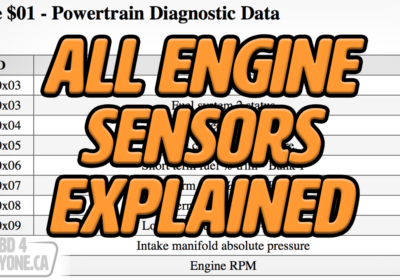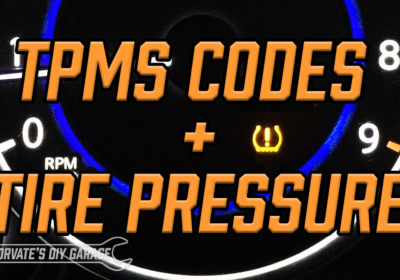On this episode of OBD 4 Everyone we are going to explain and show everything you need to know about the rear o2 sensor AND show you how to use OBD Fusion LIVE graphing feature.
Almost every gasoline fueled car made in the last 25 years will have at least two o2 sensors located in the exhaust system.
One is located BEFORE the catalytic converter and it’s main job is to provide feedback to the engine control unit on the exhaust gas concentration of oxygen.
Then the ECU will adjust the air/fuel mixture to maximize catalytic converter’s efficiency and minimize emissions.
Now, the other o2 sensor is located after the catalytic converter, and this is the one we are going to be talking about.To make sure we all have the same understanding, there are multiple names for the rear O2 sensor
for example:
• downstream o2 sensor
• post cat o2 sensor
• and O2 sensor 2.
All of these names simply tells us it’s located AFTER the catalytic converter.
If the air/fuel mixture is greater than 14.7 :1, or lean, the output voltage will be around 0.1 volts.
If the air/fuel mixture is less than 14.7 :1, or rich, the output voltage will be around 0.9 volts
and IF the air/fuel ratio is 14.7:1, the output voltage will be close to 0.5 volts.
This “narrow band” of sensitivity is why it’s also known
as a “Narrow band O2 sensor”
Now, to determine how well the catalytic converter is working,
the ECU measures just about everything it can from the rear O2 sensor
like:
• how much time it takes to switch from rich to lean
• how much time it takes to switch from lean to rich
• the frequency of how often it switches
• and there’s more, but I think you get the idea.
I’ll bet you are wondering, why does the air/fuel mixture change so much? Shouldn’t it be more stable?
A few things come into play here…
When we accelerate, the mixture will be rich.
When we lift off the gas pedal to slow down, the mixture will be lean.
and when idling or driving at a constant speed
the ECU will change the air/fuel ratio back and forth between slightly rich and slightly lean.
while it analyzes how the rear o2 sensor responds to these changes.
A healthy catalytic converter has a high capacity to store oxygen,
and as a result of this, the rear o2 sensor should have a low switching frequency.
If it has a high switching frequency, the catalytic converter oxygen storage is low and it is not functioning as it should.
When the switching frequency is too low, the check engine light is turned on with a P0420 or P0430 which means Catalyst system
efficiency below threshold.
I hope you now have a better understanding of what the rear o2 sensors do and what their output should look like for different operating conditions.
And since most rear o2 sensors are the narrow band type,
everything shown in this video should apply to any gasoline fueled car
made in the last 25 years.



